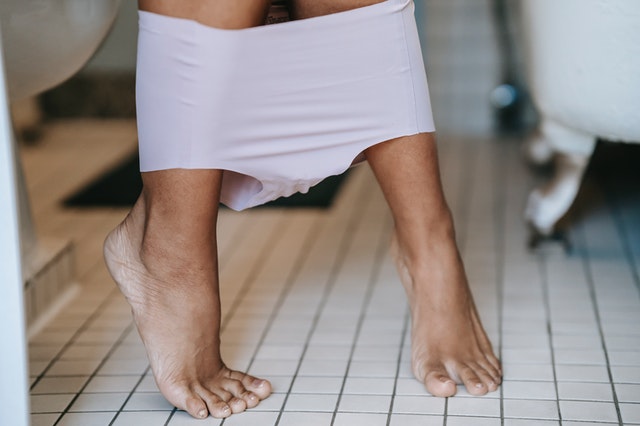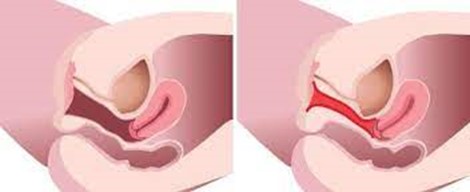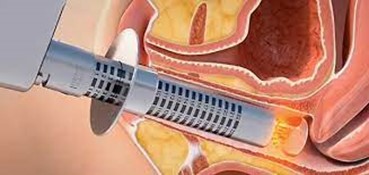
Frequent Urinary Tract Infections (UTIs) are common in menopausal women because there are so many changes in a woman’s body when this natural hormonal part of a woman’s life occurs.
As women age, their bladder walls become thinner and lose bladder elasticity, which explains the increased frequency in bathroom trips due to increased need to urinate.
Another consequence of bladder changes after menopause is a slower movement of urine from the bladder to the urethra. This slower movement leaves more time for infection-causing bacteria to develop within the urinary tract. Also the poor quality of the lining caused by the loss of estrogen makes it more susceptible to microbial attacks, and less likely to have the protective layer required to avoid an infection.
Incontinence–or loss of bladder control–is also a side effect of lack of bladder elasticity. The changes in hormone levels during menopause affect a woman’s pelvic muscles, and pelvic muscles become weaker, which can cause changes on the distribution of pressure on a woman’s bladder and urethra. Everyday activities like exercising, lifting, or coughing can pressure the bladder and cause incontinence.

Estrogen keeps the floors of the urethra, vagina, and pelvis healthy by maintaining the acidity balance. Because menopause causes estrogen levels to decline sharply, the ph levels will change and good bacteria in the vagina sometimes cannot thrive. The estrogen supports the glycogen layer that feeds the good bacteria – Lactobacili – and the loss of good bacteria makes vaginal infections with yeast, bacterial vaginosis, or aerobic bacteria more likely and more frequent. This also leads to more likelihood of urethral contamination, the opening to the bladder – another reason for increased UTIs.
Because of the hormone changes, a woman’s vaginal walls can become thin, dry, and inflamed, and easily injured during sex, increased pressure from tight clothing and increased friction like bicycling.
The urethra goes through changes during this hormonal change as well. The urethra becomes thinner and shorter. Bacteria in the urethra can travel to the urinary tract much more quickly.
During this time of life, women need to protect their urinary tract health. The most effortless action that she can take is drinking plenty of water. By drinking at least 6 to 8 glasses of water, a woman will need to urinate more frequently and flush unwanted bacteria out of their system.
Urination practices of going to the bathroom to void and cleaning after sex can reduce bacteria that might be hiding within the urinary tract—straining while urinating does not allow the bladder to empty entirely. By staying relaxed, a woman’s bladder can empty naturally. Women can also reduce possible UTIs by wiping front to back, or just wipe and drop in the toilet bowl.

Physicians often prescribe vaginal estrogen. This type of estrogen therapy can stop bacteria from spreading and reduce irritations caused by menopause. Some studies have shown that vaginal estrogen can reduce recurrent UTIs more effectively than oral estrogen, and for women not on Estrogen therapy vaginal creams, ring or tablets can be useful.
Physicians prescribe vaginal estrogen in a variety of ways. There are topical creams, vaginal inserts, or a flexible ring inserted into the vagina and replaced every three months. Yuvafem, estradiol cream, Estring or Imvexxy are a few options available.
Last but not least, laser therapy has shown to be very promising in providing relief for many of the urinary issues plaguing women after menopause.
The Er:YAG laser SMOOTH® (Fotona) is a noninvasive nonablative laser procedure for the functional strengthening of connective tissue inside the vaginal wall, improving the pelvic floor support and diminishing symptoms of pelvic floor dysfunction. Er:YAG laser energy is strongly absorbed in water. Therefore, laser pulses achieve controlled heating of the collagen in the deeper mucosa layers, with no ablation or overheating of the mucosa surface, reducing the risk of perforation or accidental lesions of the urethra, bladder, or rectum. This laser is more likely to help women that have urinary incontinence related to pelvic floor relaxation, like sneezing, coughing, running, jumping, etc. A series of 3-5 sessions 30 days apart is required. Source: https://www.ncbi.nlm.nih.gov/pmc/articles/PMC6582847/

CO2 laser system MonaLisa Touch® is a fractional ablative intravaginal therapy that is delivered once a month for 3 consecutive months. The procedure is usually performed in an outpatient setting and does not require any specific preparation or anesthesia. It is recommended to avoid vaginal sexual intercourse for at least 3 days after the laser application. The CO2 laser procedure requires local anesthesia for the delicate skin thin of the vaginal opening, there is minimal to moderate discomfort post procedure for 1-2 days depending on how thin the skin is after menopause (no discomfort in women that make or use estrogen). This laser is likely to be more effective in women that have urge driven incontinence, increased frequency, and have to run to the bathroom or leak on way there.

For more information about laser application in urinary and vaginal health after menopause please check out this article – https://www.ncbi.nlm.nih.gov/pmc/articles/PMC6582847/
Menopause is a natural part of every woman’s life but can be frustrating. Women not only have to deal with hot flashes, weight gain, night sweats, and mood changes like depression or irritability, but they need to pay special attention to their urinary health.
By maintaining a healthy diet, exercising regularly (including pelvic floor strengthening exercises), drinking plenty of water, and taking precautions with their urination habits, a woman can minimize many of the discomforts menopause brings.
Women should speak openly and honestly with their physicians and not be embarrassed about incontinence or bladder discomfort. Your physician can explore options of treatment that may be right for you.
If you’re finding yourself having a problems with urinary health such as incontinence or leakage, please make an appointment with Dr. Mirela Cernaianu, also known as Dr. C, at Hera Healthcare in Thousand Oaks.
Lasers for the Treatment of Stress Induced Urinary Incontinence in Women
Our practice has 7 years of experience and excellent results using the CO2 laser MonaLisa Touch® and 2 years since using FOTONA for prolapse and stress induced urinary incontinence.

We also offer VIVEVE a Cryo/RF laser that cools and then heats the delicate vaginal collagen tissue promoting tightening and helping support the bladder wall and urethra, providing relief from urinary incontinence and improving vaginal laxity. Whereas the other lasers require multiple sessions, VIVEVE is one treatment, pain free, no anesthesia, no downtime or pelvic rest required and has a 50-80% success rate.
You can avoid surgery with its risks and downtime and opt for a laser instead!
No matter what type of urinary trouble, before or after menopause, we have a laser that is very likely to help resolve it!


